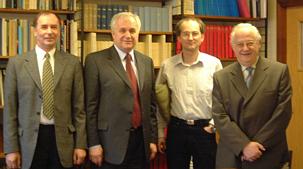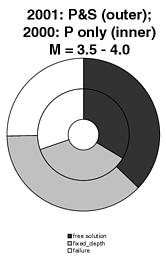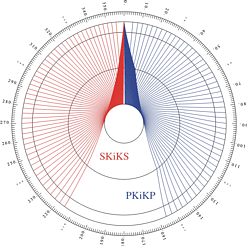Avi Shapira arrives at ISC
Dear Colleagues,
This is my first letter to you as Director of the ISC. I would like to take this
opportunity to thank you collectively and individually for selecting and approving
my appointment. I do not like to make promises except that I shall do my best to
serve the ISC and the supporting seismological community.
I trust that I can speak for all of you when expressing our thanks and gratitude to Raymond Willemann, former Director of the ISC, for the excellent job he did. I can definitely testify to the fact that the ISC under Ray's leadership has made a big step into the 21st century through automating many of the ISC tasks and by providing additional processing tools for the seismologists. Again - thank you Ray.

During the first 3 months of my stay at the ISC I have come to know
and appreciate the professionalism and dedication of the staff. The high quality
products of the ISC, presented over the years in the form of earthquake bulletins
and catalogues, are primarily to be attributed to the efficiency and the highly
qualified administrative, technical and seismological staff of the ISC.
Our auditors, Griffins Ltd., have conducted their annual audit and agreed that the 2003 ISC accounts, presented by Maureen Aspinwall, ISC's Administration Officer, are a true and fair statement of the financial affairs of the ISC.
In the first quarter of 2004, Dmitry Storchak, Nurcan Ozel and Maiclaire Bolton have completed the review of the earthquake bulletins up to the end of April 2002. Subscribers will shortly be receiving the printed 4-monthly bulletin for 2002 Jan-Apr and the CD with the updated earthquake files. The training of our new seismologist, Maiclaire Bolton, is in very good progress and thus, we expect to shortly catch up with the original review scheme and provide the Bulletins closer to the time of occurrence of the events.
The main reason for the delay between the time of occurrence and the publication of the bulletin is attributed to the time when the data from the seismological organisations are made available to us. In that respect, I should add that Peter Dawson, who amongst other duties is also in charge of properly parsing your messages, and myself, will be most grateful if contributors are careful when sending data ensuring that it arrives in the right format and that their seismic stations are registered properly in the International Station Registry.
We are approaching the final stage of implementing the new ISCloc program in the routine operation of the ISC. Richard Luckett, Dmitry Storchak, Peter Dawson and James Harris are designing and developing the tools to integrate ISCloc into the interactive editing and review processes.
A new development in the ISC's routine operation is the adoption of the regionalization scheme that the IASPEI working group has proposed and was endorsed by IASPEI in its general assembly in 1991. ISC's systems engineer, James Harris will hopefully implement the new regionalization in the upcoming CD of earthquake data.
Matthew Evans, a Ph.D. student of Leeds University, is completing his research at the ISC on S-splitting of SKS waves. A prototype web interface to distribute results has been designed and is located at: www.gxjydl.com/SKS. Please e-mail any comments or feedback you may have to matt@isc.ac.uk.
In February 2004 I conducted meetings with the Earth Sciences Division of UNESCO and with the European - Mediterranean Seismological Centre, both located in Paris. An understanding was reached that the co-operation between ISC and UNESCO should strengthen and different practical alternatives should be explored. The meeting with EMSC was devoted to the co-ordination of activities and future co-operation. Both EMSC and ISC realize that the name coding of seismic stations should be reviewed and possibly changed. This alternation should be co-ordinated with other seismological centres such as IDC/CTBTO and NEIC/US Geological Survey. A meeting with NEIC is planned for the summer of 2004.
Avi Shapira
Director


